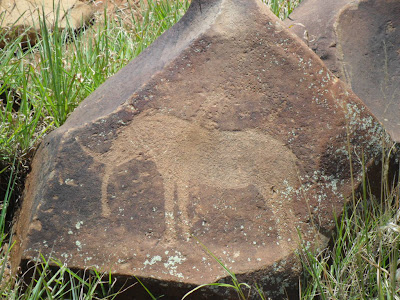One of my goals this year (before I leave GRS) is to see every Skillz practice. As fun as the office can be (hah!), going to interventions and seeing our Skillz Coaches in action is by far the best part of my job.
So last week I asked Big Eyes if I could attend every practice during one of his Skillz 1.1 interventions and he graciously told me that I could go to any intervention that I chose. So I chose to attend the intervention at West End Primary. I chose this intervention for a few reasons. For one, the coaches working at this school (Nthabi, Poppy, Big Eyes and Isaac) are some of my favorite coaches. For another, this intervention occurs Thursday mornings, which are one of the few times during the week I am not swamped with work. But most of all, I picked this intervention because it is held entirely in English!
Today, after Coach Nthabi and Caoch Poppy introduced me to their class, we began Practice 2 (unfortunately the intervention at West End started last week and I missed the first practice, but I will be able to attend every remaining practice). We started off the day with an energizer to get all the participants moving around and excited.
 |
| Coach Poppy telling her coaches story. |
After that, Coach Poppy shared her Coach’s Story. In her story, Coach Poppy told participants about her sister who contracted HIV after she was raped at the age of eleven. Her sister found out that she was HIV positive in 2006 when she gave birth to her son. She did not tell anyone that she was HIV positive because she was afraid. A year later, she finally told Coach Poppy she was HIV positive. Coach Poppy went on to describe a series of bad things that happened (she failed her matric trial, her father died, her step-father emotionally abused her) while she was trying to help her sister. She admitted that at one point she reached a very low point and did not have the desire to live any more. But at this point her story turned and she explained how she found the courage to change her life and help both her sister and herself. Today Coach Poppy is one of our best GRS coaches and her sister is receiving treatment and is living a healthy and happy life with her husband and HIV negative son.
The purpose of the Coach’s Story is to help participants form personal connections with their Skillz coaches and also for coaches to share ways in which they took control of HIV in their life and chose to be resilient. The key message that coaches hope to instill in participants is the importance of being resilient to challenges in life.
Participants are always given the opportunity to ask questions about a Coach’s Story and I was amazed how inquisitive the young girls in this class were! They asked all sorts of questions about Coach Poppy’s sister and family today, about Coach Poppy’s feelings at different moments during her story and about Coach Poppy’s continued resilience.
 |
| Coach Nthabi leading Fact/ Nonsense. |
When participants were done asking questions, Coach Nthabi led Fact/ Nonsense. During this game, participants were divided into small groups and Coach Nthabi read statements about HIV. After she read each statement the groups were given time to discuss the statement and decide whether it was a fact or whether it was nonsense. Then, when Coach Nthabi counted down to three, groups had to hold up a card that said “Fact” if they agreed with the statement or “Nonsense” if they thought the statement was baloney. Groups then got a chance to explain why they made the decision they did, after which, Coach Nthabi shared the answers with the group.
 |
| A group of girls discussing one of the statements. |
I’m sure some of you are dying to test your own HIV knowledge (especially if some TWAMPS are reading this right now), so here are the Fact/ Nonsense statements that Coach Nthabi read. Do you think they are fact? Or nonsense? (All answers are at the end of the blog.
1. Washing after sex prevents HIV.
2. HIV is only spread by blood.
3. Unprotected sex is the most common way HIV is spread in South Africa.
4. A person can get HIV by sharing food with someone who has HIV.
5. More teenage girls have HIV than teenage boys.
It was a lot of fun playing this game with participants. The girls got really into discussing each of the statements and at the end of the practice, when Coach Nthabi asked what they had learned, they practically re-stated the guide for us!
~~~~~~~~~~~~~~~~~~~~~~~~~~~~~~~~~~~~~~~~~~~~~~~~~~~
Answers to Fact/ Nonsense:
1. Washing after sex prevents HIV.
NONSENSE. Even though Jacob Zuma claimed that he wouldn’t get HIV because he washed after sex, this is nonsense.
2. HIV is only spread by blood.
NONSENSE. There are four fluids that can spread HIV; blood, semen, vaginal fluids and breast milk.
3. Unprotected sex is the most common way HIV is spread in South Africa.
FACT.
4. A person can get HIV be sharing food with someone who has HIV.
NONSENSE. HIV is only spread via the four fluids mentioned above. It is not spread by mosquito bites or everyday contact such as hugging, kissing, shaking hands, sharing utensils, toilet seats, etc.
5. More teenage girls have HIV than teenage boys.
FACT. Teenage girls are three to four times more likely to get HIV than teenage boys. Why? Girls attract older sexual partners who are more likely to have HIV than partners their own age.























